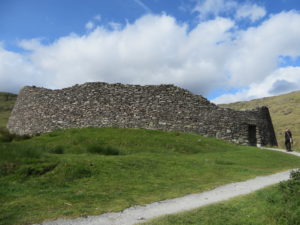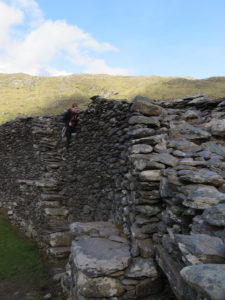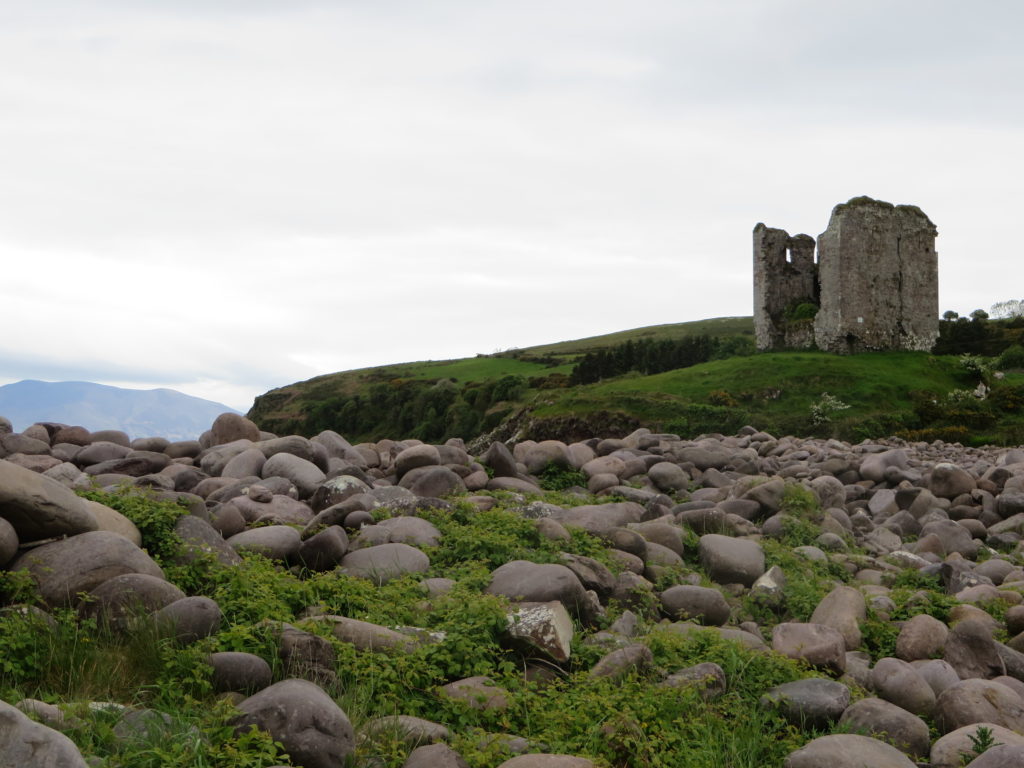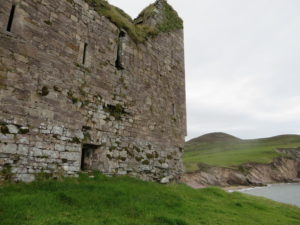We often travel a route with the map in hand and randomly choose short historic side trips to investigate while on the way to our actual destination. Sometimes, it’s a wild goose chase. In other words, it’s often a treasure hunt which can lead to such beauties as the Ring of Kerry’s Staigue Fort and the Dingle Peninsula’s Min Aird Castle.
Disclosure: This post contains Affiliate Links.
Staigue Fort
When is a stone defensive structure and home not a castle? When it’s a prehistoric stone fort! Staigue Fort is one of the largest and finest stone forts in Ireland – according the interpretive panel just outside its walls! The name comes from “An Steig” – which is roughly translated as “the portion of land.” And it is found on a small portion of land off the southern leg of the infamous “Ring of Kerry” on Ireland’s Iveragh Peninsula.

This stone fort was built in the early centuries before Christianity came to Ireland – somewhere between 500 BC and AD 300. But unlike more “modern” castles built for royalty, this one was most likely built for a wealthy landowner or chieftain who had a need for security.
The wall rises up to six metres (over 19 feet) high. It is four metres (13 feet) thick and is built entirely without mortar and encloses an area thirty metres (almost 100 feet) in diameter. Several near-vertical masonry joints are visible in the walls. These may indicate that the massive stone structure was built in stages rather than in one continuous act. We entered through a narrow, lintel-covered passage in the wall.

Staigue Fort was the home of the chieftain’s family, guards and servants. It would have been full of houses, out-buildings, and possibly even tents or other temporary structures. None of the inner buildings survive today. The top of the wall was reached by a series of steps which criss-cross against the inside of the wall. An earthen bank and ditch around the fort gave further protection. You say fort, I say prehistoric castle!
Min Aird Castle
Min Aird Castle – also commonly referred to as Minard Castle – is located in Cill Mhuire Bay on the Dingle Peninsula. It is the largest fortress on the peninsula. Cill Mhuire Bay is also known for its geology. Eighty-million-year-old fossilised sand dunes can be seen in its cliffs. It also contains one of the finest storm beaches in Ireland.

In the Devonian period, rivers flowed south across a large desert… wait, we’re still in Ireland, right?

Rivers flowed across a large desert, carrying sand and coarse sediments. The crescent-shaped sand dunes in the desert became the pale, yellow Cill Mhuire Sandstone. This same sandstone was used to build Min Aird Castle.
Blocks of sandstone have become rounded by the action of the waves and from knocking against each other. Storms have thrown them towards the back to the beach where they form a ridge called a storm beach.

The 16th century tower house that is Min Aird Castle has stood the test of time. It was attacked by Cromwell’s army in 1650 and was structurally damaged. Its crumbling remains have continued to withstand the ravages of a stormy coast for centuries.
Castles, towers, forts – Ireland’s countless historic stone structures beckon. What are you waiting for?
Read more about our Irish adventures at:
The Stone Circles of Cork & Kerry, Ireland
Getting to Know Guinness: Going to the Source in Dublin, Ireland


Hosted by:


Leave a Reply